Motorpsycho - Profile 1991-2003
by Andrew Carver
published: 17 / 2 / 2003
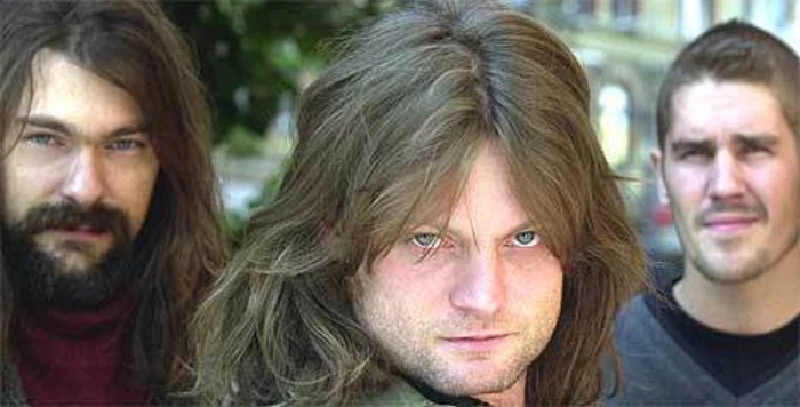
intro
One of the most durable of all Scandinavian rock groups, Motorpsycho's musical career has taken them from punk to psychedelia. Andrew Carver profiles their fascinating musical evolution, and multi-album history
Introduction In 1991 Voices of Wonder records released Motorpsycho’s first long-player. The band’s name came from a film title that appeared on a triple bill of Russ Meyer movies (Faster Pussycat, Kill! Kill and Mudhoney were already taken); the album art had an overheated yellow, blue and red portrait of the three conspicuously longhaired band members in a pose reminiscent of the first Stooges album. Combined with the title — 'Lobotomizer' and band name, rendered in twisty letters, the cover gave a fairly clear signal about the band’s intent. In 2002 'It’s a Love Cult' was issued on the Stickman label. This time around, the cover has the band’s name and album title in a sedate red and purple serif font, while the art is a Rorschach blot-style picture of a baby on a plain white background. The change in art is matched by a change in the music within. In between the two albums, Motorpsycho has steadily released music at the rate of about one LP per year, along with a blizzard of 10-inchers and a flurry of singles and compilation tracks. Motorpsycho are frequently compared with the Soundtrack of Our Lives, another Scandinavian band which had its genesis in Stooges-worship (two members were part of Union Carbide Productions) before falling under the influence of 60's West Coast psychedelic bands like Love. Although they do share a label (Stickman Records of Germany is the Soundtrack of Our Lives’s label for vinyl releases and the home of such excellent bands as 35007 and Isolation Years), Motorpsycho, unlike TSOOL, doesn’t show a heavy 1960's influence throughout their work. It’s more accurate to say that Motorpsycho is Norway’s answer to the Flaming Lips. both bands started out as riff-heavy psychedelic punks with a taste for the grand crescendo before heading down a more introspective route. The two bands don’t sound much alike (Motorpsycho are more devoted to the low end, as you might expect of a band where the bassist,Bent Saether, writes a lot of the songs), but their evolutionary path is similar, as the bands each tried to expand their sound with new instruments and sound manipulation, and new arrangements. First Phase Motorpsycho’s debut is mostly heavy guitar distortion, heavy bass distortion and howling vocals. Much of the album could be hand-me-downs from Blue Cheer, funnelled through heavy metal, Husker Du and “Seattle scene” bands of the time like Mudhoney, before reaching its apotheosis in 'TFC', a cyclone of overdriven guitar noise where Saether, who is also the band's vocalist, bellows his outrage at child abuse committed by a hypocritical “true fine citizen.” Even at this early point in their career the seeds of future musical direction are evident: The title track 'Lobotomizer' is a minute of droning cello and acoustic guitar. Their next album' '8 Soothing Songs for Rut' toned down the noise level slightly (at least on the first two tracks, which were attached to six tracks from an earlier mini album to form the LP). Clearer production made it easier to hear how the instruments interact, but the piano riff on 'Loaded' plainly references the Stooges’ 'Funhouse', while 'Lighthouse Girl' could be the daughter of 'TFC'. '8...' is certainly struck from the same mold as 'Lobotomizer'. Once again, there are hints of Motorpsycho’s future in the piano-noodling that concludes 'Lighthouse Girl', the flicker of sitar on “Step Inside” and the final track, a cover of The Mamas and the Papas’ 'California Dreamin’ '. ('8 ...' also marked the band’s only significant lineup change: Hakon Gebhardt joined Saether and guitarist Snah Ryan, taking over the drummer’s stool from Kjell Runar (Killer) Jenssen.) 'Demon Box,', the band’s third album, starts off with the jaunty acoustic guitar-and-woodwind ditty 'Waiting for the One', a far more developed tune than the track that began 'Lobotomizer.' The elements of previous albums: Distortion, yelled vocals etc., are still present in' Demon Box', (witnessed by the choruses of 'Nothing to Say' and the near-metal 'Feedtime', among other songs) but they’re in a smaller portion than on 'Lobotomizer' and '8 ...'. Ryan’s guitar parts seem clearer and his lead work more intense. It’s on 'Tuesday Morning', however, where the band really makes it clear they’re backing away from the modus operandi of their earlier work: Saether shows a newfound inclination to sing instead of yell. There’s also burbles and trills and production tricks that give this song some extra space and shine; they are the work of Helge (Deathprod) Sten, producer and noise tweaker. His efforts are so important in defining the band’s sound that he might as well be a fourth member. Also making a first appearance on 'Demon Box' is Kim Hiorthoy, whose artwork and design has graced every Motorpsycho long-player since. Along with the next two songs, (a cover of Moondog’s'All This Loneliness' featuring even more of the sitar that made an oh-so brief appearance on '“8 ...', 'Tuesday Morning” forms an acoustic suite that’s a signpost leading to the band’s new sound. The next track is completely different. 'Step Inside Again' is all bass rumble and electric bleeps, falling away for spooky whispered vocals and a low-key acoustic riff. It’s slightly Skinny Puppy-like in tone. Things return to “normal” again on the title track and the following tracks, but '“Demon Box' still marks an essential turning point for Motorpsycho. It was also their last album with Voices of Wonder Second Phase After “Demon Box”, the band decamped to Stickman Records. The band has since engaged in a legal battle with its first record company, one that has landed in Norway’s supreme court. The band’s tenure on Stickman began with a grandiose gesture: A double album, 'Timothy’s Monster.' The first CD consists of shorter songs, 11 in all, while the second CD contains four more expansive tunes. The extra time obviously suits the band; 'Timothy’s ...' is one of their best albums, in addition to being a considerable leap forward in their sound. Saether goes solo on the first song, 'Feel', which is once again a slow tempo, pastoral opener. Saether added guitars and mellotron himself; the band as a whole became more comfortable with using multitracking to layer their songs. The rhythmic influence of krautrock also emerges. “Timothy’s ...' features a wider musical palette, with theremin, mellotron, a string section on 'Sungravy' and various other odds and ends sweetening different tracks, including Gebhardt on banjo. Lars Lien, who contributed keyboard and engineered on earlier albums, adds keyboards—there’s some particularly noteworthy Wurlitzer on '“Beautiful Sister' — and is credited as a band member, along with Helge Sten. The album swings more than earlier efforts; noise has been left aside for a far more interesting sound. They still love the grand crescendo though, and the slow build of sound can be heard on 'Giftland' to stunning effect. They're second only to Godspeed You Black Emperor! in the big finish field, though soundwise they aren’t terribly similar. (Just after the release of 'Timothy’s Monster', the band also released the wild card in its catalogue, and its only album not currently available. The band swears 'The Tussler' is the soundtrack for an unreleased Italian cowboy film of the same name. Stickmanallegedly plans to rerelease the album in the near future). 'Blissard' continues the trend in 1995, and is a punchier album thanks to the temporary addition of Morten Fagervik on rhythm guitar and Lars Lien again on keyboards. Acoustic guitars are relatively scarce on 'Blissard', only stepping to the forefront for the penultimate track, 'Fools Gold'. The album is rounded out by an ambient track by Sten. (It seems significant that in the pictures of the band, everyone’s hair looks about a foot shorter than it was in 1991.) 'Angels And Demons At Play', their next album, starts with 'Sideways Spiral I' and the tremulous sound of a saw, vocals that could have been nicked from a Cocteau Twins album and bathysphere pings, then launches into the rocking intro for 'Walking on the Water' and shifts between the two for the rest of the album, artfully balancing the churn of electric guitars with the saw and Sten’s soundscapes. Lyrically, the song confronts the deceptions of authority, a popular Motorpsycho theme (the song is retitled “You Lied” on the band’s first live album). 'Angels ...' was also a double-LP (though it was just short enough to fit on one CD), and affirms that the room to stretch out has allowed the band to turn out their best work. 'Trust Us' is Motorpsycho’s third double album, and another tour-de-force. Opener 'Psychonaut' bristles with psychedelic energy, late 1960s Who married to— yet again— a Stoogy one-note piano riff. It all races along on top of a wobbling saw played by the uni-monickered Ohm who performs similar duties under various names (O. H. Moe, O. Molna) on other albums and also contributes violin among other instruments going back to 'Timothy’s Monster'. 'Psychonaut' and its follower 'Ozone' uphold comparisons to the Soundtrack Of Our Lives’ more than most other Motorpsychomusic; in part because there are at least two distinct guitar parts on the songs. The most peaceful part of the album is played by a new collaborator, Trygve Seim of the free jazz group the Source. Seim is the lone performer on the brief 'Siddhardtino', playing reindeer antler (as a wind instrument). On the lullaby 'Coventry Boy', Snah handles the vocals, Bent plays the drums and Geb plays glockenspiel. Seim also plays clarophone on the minute-and-a-half closer, a stumbling instrumental called 'Dolphyn' where bells and drums round out the sound. Third Phase 'Let Them Eat Cake' ushers in the third phase of Motorpsycho’s career. Although Motorpsycho haven’t turned into the Beach Boys, or anything like them, an orchestral-pop influence is clear, and much of the album is a decidedly jaunty effort. Single 'Walking With J.' is a poppy stab at organised religion (much like 'Walking on Water') and comes with vocal harmonies and a trombone flourish. There’s a horns and a string section on the first two songs, 'The Other Fool' (another song about deception, and the willingness by some to be deceived) and 'Upstairs-Downstairs', and horns on 'Never Let You Out' and the closer '30/30'. That final track starts with a threatening lowing of horns and concludes with a shuddering gong. It sacrifices the usual bass-drums-guitar backing of other tracks, apart from some low-key chording that could also during the verses. 'Let Them ...' seems like a gentler album than its predecessors in part because several harder songs that might have diluted the impression were left off; they appear on their next 'Barracuda' EP (at seven tracks and 33 minutes in length, it would qualify as a long-player for many bands). Songs like 'Up ’Gainst the Wall (High Time)' on 'Barracuda' reference the MC5 musically (the band frequently performs the band's 'Black To Comm'live). 'Star Star Star' nods to the Rolling Stones and the discoverer of LSD in 'Dr. Hoffman’s Bicycle' (one-note piano riff ... again!). Alhough there are horns on 'Heartbreaker' and 'Star Star Star', 'Barracuda' mostly sticks to the power trio core and rocks out with an energy sometimes missing from its companion. The requisite “you lying bastards” song comes with the first-person manipulator account of 'Rattlesnake'. The title of 2001’s 'Phanerothyme' comes from an Aldous Huxley quote. In addition to the band and Helge Sten, there’s a dozen backing musicians in the very democratic, alphabetically ordered liners credited with everything from clavinet to a tuba. Having dreamed of California on '8 Soothing Songs for Rut', Motorpsycho sing 'Go To California', with harmony vocals, flute, and a long West-Coast style guitar solo in stereo. The band still retains its old force on 'Painting The Night Unreal', but even that track has a restrained opening. Motorpsycho’s latest album, 'It’s A Love Cult', combines the punchier pop-rock with the orchestration of 'Phanerothyme'. In the opening song 'Uberwagner or a Billion Bubbles In My Mind' and 'Neverland' the band adds a post-rock sheen to bands like Love and Moby Grape, while much of 'The Mirror and the Lie' is strikingly similar to late-period Mercury Rev. Despite its extensive use of the studio, Motorpsycho also enjoys an excellent live reputation, well born out on a pair of live albums. The first volume in the Roadworks series, 'Heavy Metall iz a Poze, Hardt Rock iz a Laifschteil', documents dates in Germany and Holland played while touring 'Trust Us' and includes a brain-destroying cover of the MC5’s 'Black To Comm'. Volume 2, 'The MotorSourceMassacre' is a recording of a collaboration between Motorpsycho and jazz group The Source at the 1995 Konigsberg Jazz Festival. Each group played their music at the same time as the other group, filling out each other’s sound. In retrospect, a sign of things to come. Motorpsycho have performed a neat trick, dramatically changing their wound while remaining recognisably the same band by using similar riffs and scales throughout their career. They’ve also made consistently fine albums (though it must be said their two earliest efforts haven’t aged as well as later stuff).'Timothy’s Monster' is generally considered their finest hour (or is that hour-and-a half?); 'Trust Us' is just as fine. 'Blissard' is an excellent starting point for those who like their music in reasonably quick bursts, while 'Let Them Eat Cake' is their best late-period album. Few bands could boast as many high points in their career as Motorpsycho — and the band shows no sign of slowing down.
Band Links:-
https://www.facebook.com/motorpsychonewshttp://motorpsycho.no/
Have a Listen:-
Picture Gallery:-
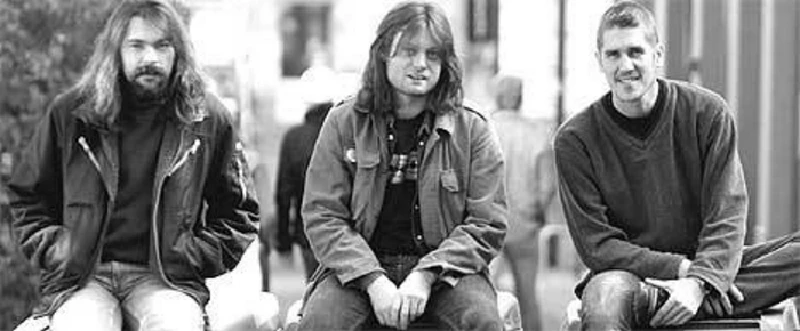
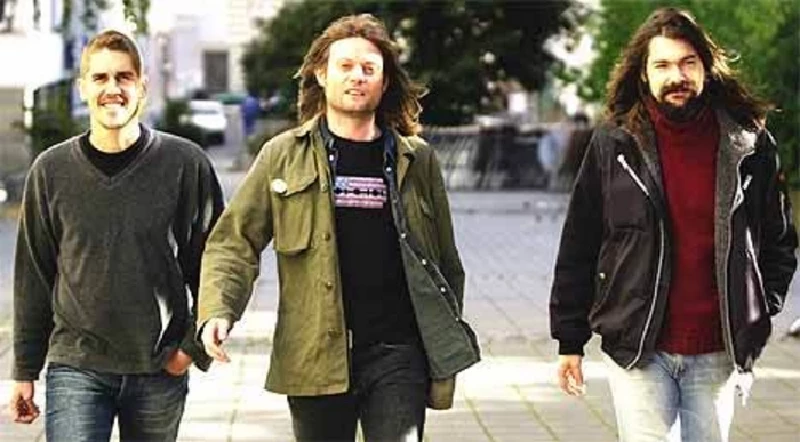
profiles |
|
Motorpsycho (2013) |
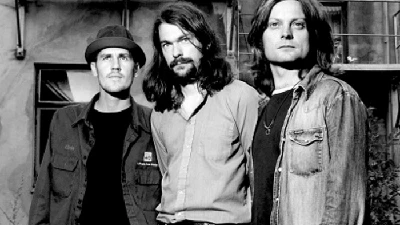
|
| Andrew Carver reflects upon the history of Norwegian psychedelic act Motorpsycho and their classic fifth album, 'Blissard', which has recently been re-released in a four CD box set |
favourite album |
|
Demon Box (2015) |
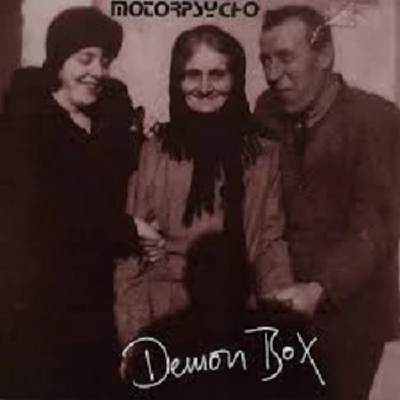
|
| In our 'Re;View' section, in which we look back at albums from the past, Erick Mertz refelects on Norwegian heavy metal/psychedelic rockers Motorpsycho's classic third album, which has just been re-released in a four CD box set |
soundcloud
reviews |
|
Kingdom of Oblivion (2021) |
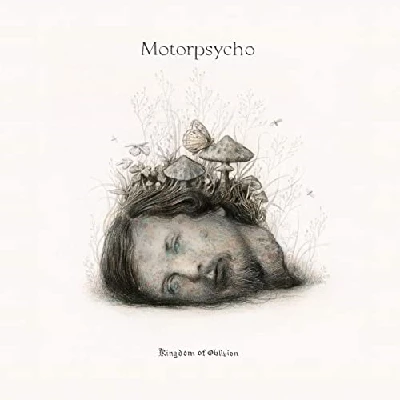
|
| Dull and cliched harmonic rock on latest album from Norwegian band Motorpsycho |
| The All Is One (2020) |
| The Crucible (2019) |
| Here Be Monsters (2016) |
| Supersonic Scientists – A Young Person’s Guide to… (2015) |
| Still Life with Eggplant (2013) |
| Heavy Metal Fruit (2010) |
| Little Lucid Moments (2008) |
most viewed articles
current edition
Peter Doherty - Blackheath Halls, Blackheath and Palace Halls, Watford, 18/3/2025 and 21/3/2025Armory Show - Interview with Richard Jobson
Liz Mitchell - Interview
Lauren Mayberry - Photoscapes
Deb Googe and Cara Tivey - Interview
Max Bianco and the BlueHearts - Troubadour, London, 29/3/2025
Garfunkel and Garfunkel Jr. - Interview
Sukie Smith - Interview
Maarten Schiethart - Vinyl Stories
Clive Langer - Interview
previous editions
Heavenly - P.U.N.K. Girl EPBoomtown Rats - Ten Songs That Made Me Love....
Trudie Myerscough-Harris - Interview
Doris Brendel - Interview
Beautiful South - Ten Songs That Made Me Love...
Dwina Gibb - Interview
Pulp - Ten Songs That Made Me Love...
Kay Russell - Interview with Kay Russell
Sound - Interview with Bi Marshall Part 1
Barrie Barlow - Interview
most viewed reviews
current edition
Davey Woodward - Mumbo in the JumboNigel Stonier - Wolf Notes
Wings - Venus and Mars
Kate Daisy Grant and Nick Pynn - Songs For The Trees
Only Child - Holy Ghosts
Neil Campbell - The Turnaround
Philip Jeays - Victoria
Darkness - Dreams On Toast
Suzanne Vega - Flying With Angels
Charles Ellsworth - Cosmic Cannon Fodder
Pennyblackmusic Regular Contributors
Adrian Janes
Amanda J. Window
Andrew Twambley
Anthony Dhanendran
Benjamin Howarth
Cila Warncke
Daniel Cressey
Darren Aston
Dastardly
Dave Goodwin
Denzil Watson
Dominic B. Simpson
Eoghan Lyng
Fiona Hutchings
Harry Sherriff
Helen Tipping
Jamie Rowland
John Clarkson
Julie Cruickshank
Kimberly Bright
Lisa Torem
Maarten Schiethart